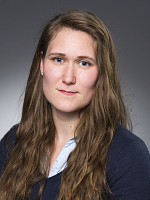The Norwegian Complement Research Group (NCRG) is an informal association of scientists focusing their work mainly on the complement system, a part of the hosts’ innate immunity. The group comprises approximately 25 people located at two different laboratories in Norway, “The Bodø Laboratory” at Nordland Hospital, Bodø, and “The Oslo laboratory” at Oslo University Hospital and University of Oslo.
About complement
Complement is part of the innate immune system protecting the host against danger from external (e.g. invading microorganisms) or internal sources (e.g. damaged tissue). Regulatory control mechanisms normally prevent that local activation becomes systemic and local complement activation is therefore necessary for fighting infections, tissue repair and regeneration. However, under various disease conditions complement is improperly activated, either locally leading to tissue damage, or systemically with risk of serious homeostatic disturbances.
Research goals
A primary research goal for the NCRG is to elucidate the role of complement as a primary inducer of the inflammatory reaction and thereby form a basis for a future therapeutic approach in complement-mediated disease processe

More about the group
Please find more information about NCRG on our external website.





